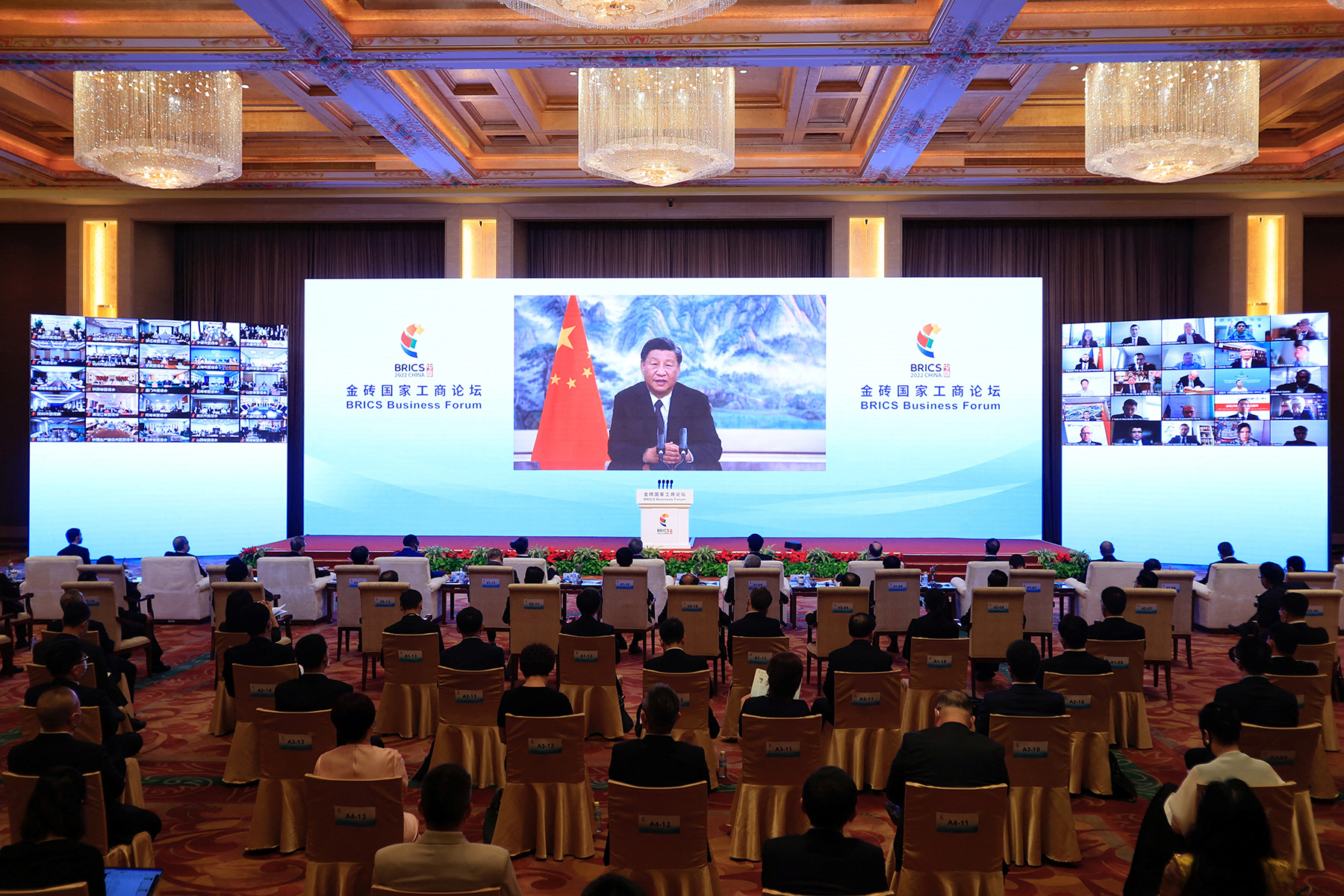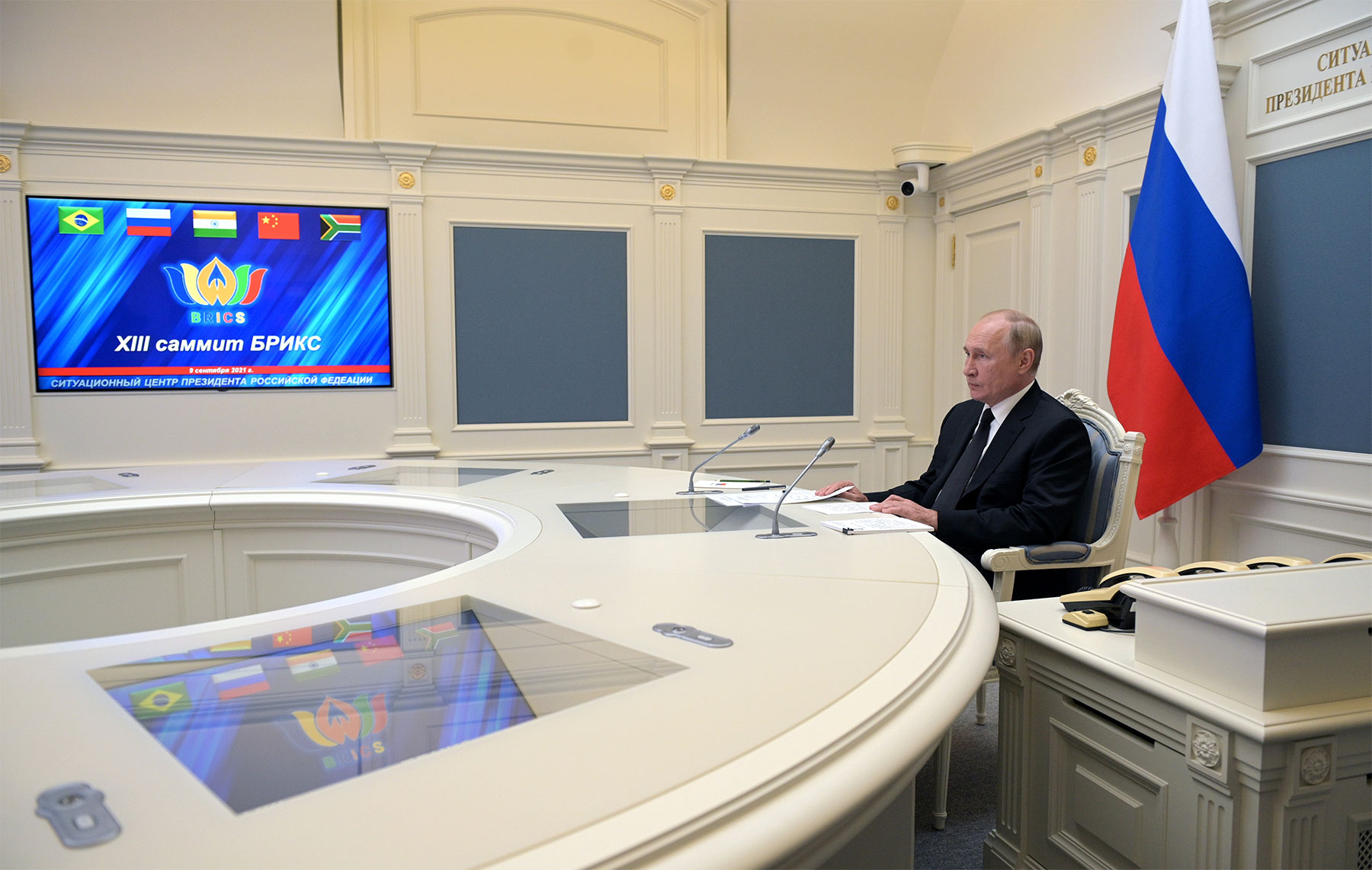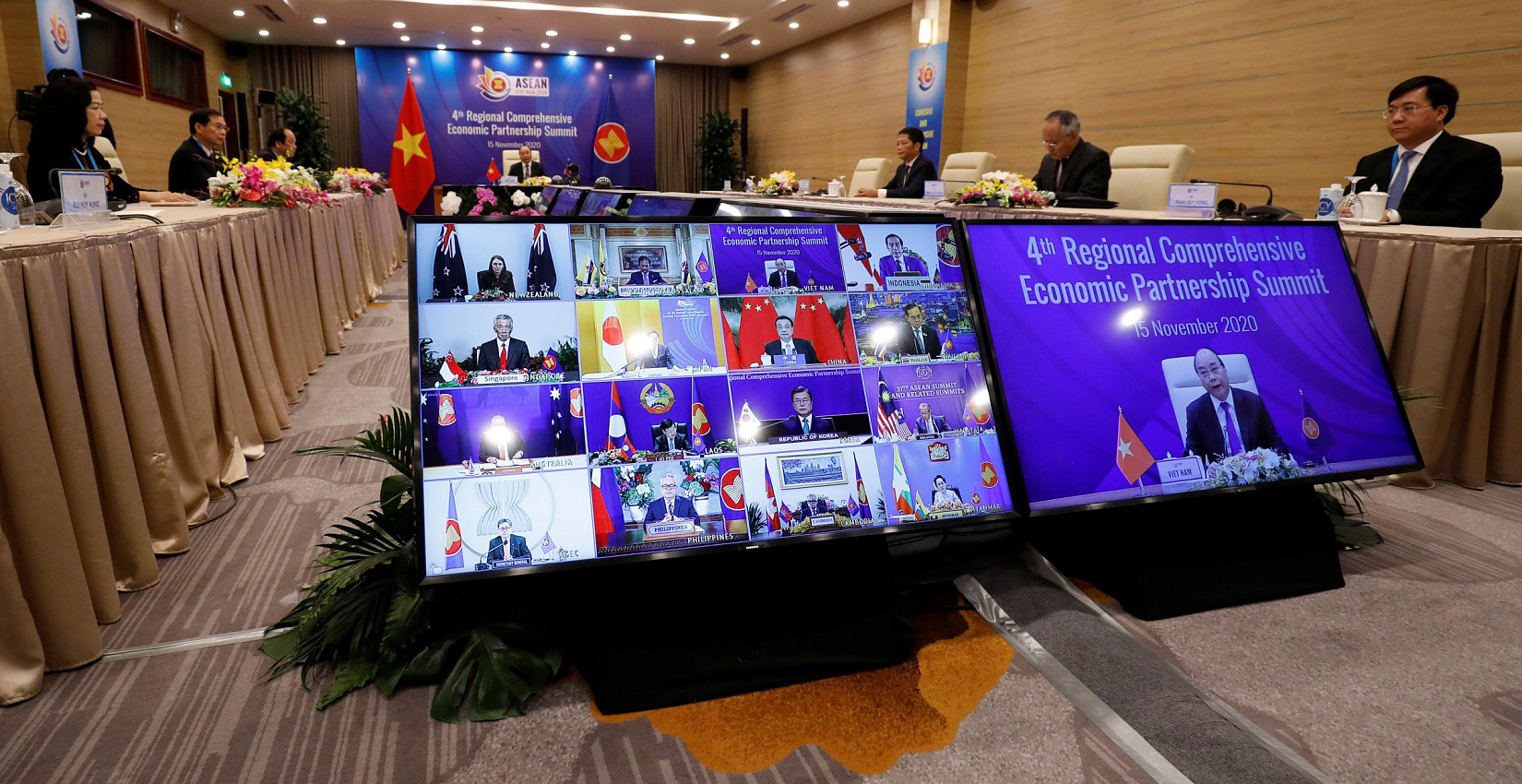Global economy is currently going through a period of rising integration, with the new platforms emerging that assume transcontinental scale, becoming the principal source of global markets opening up. However, in spite of the positive effects that such new platforms have in store for the openness of global economy, this process also entails intensifying competition between and polarization of these blocs along the North–South axis. In 2022, this opposition was increasingly noted between BRICS and G7, the leading blocs of the Global South and the Global North. Amid these conditions, it is very important to design mechanisms for interaction and cooperation between platforms representing developed and developing nations—already at the early formative stages of large-scale blocs.
Today, there is both a need and a possibility to couple integrations of the North and the South. However, it requires new mechanisms of cooperation within global forums such as G20, including cooperation between regional integration blocs of the North and the South. Besides, it is necessary to transform the largest regional blocs along the lines of greater openness to “integration of integrations” and the possibility of connections with other regional blocs. Countries of the Global South should be more active in creating common platforms for economic cooperation. In the last few years, developing countries’ prerequisites for creating such mega-platforms have significantly improved. The developing world inaugurating a common integration project will, in turn, see more favorable conditions for constructive cooperation between—and connection of—the platforms of developed and developing states. As of yet, integrations of the Global South are far from the degree of connectedness and structuredness typical of developed states’ integration projects. As the “integration gap” in the global South is overcome, this space will form conditions for stable and balanced connections between platforms of developed and developing states. The African Union and India (by being more actively involved in shaping the agenda of BRICS+ and BRICS++) may play the key role in these processes.
We build too many walls and not enough bridges.
Isaac Newton
Global economy is currently going through a period of rising integration, with the new platforms emerging that assume transcontinental scale, becoming the principal source of global markets opening up. However, in spite of the positive effects that such new platforms have in store for the openness of global economy, this process also entails intensifying competition between and polarization of these blocs along the North–South axis. In 2022, this opposition was increasingly noted between BRICS and G7, the leading blocs of the Global South and the Global North. Amid these conditions, it is very important to design mechanisms for interaction and cooperation between platforms representing developed and developing nations—already at the early formative stages of large-scale blocs.
Growing North–South competition
For developed nations, coupling the platforms of the Global North with those of the Global South is not so much a matter of assisting the developing world—it is more a matter of maintaining and stepping up the pace of their own economic growth in competition with the Global South since “catching-up development” of developing countries helps them grow faster than developed nations. The principal potential for growth of the global economy rests with the developing world. Moreover, these countries harbor the greatest potential for reducing tariff barriers as part of forming their integration platforms. This prompts increasing competition for platforms in the most dynamic regions of the developing world, as is exemplified by the exacerbating competition between the U.S. and China in Asia-Pacific.
The nations of ASEAN make the acute competition between Beijing and Washington particularly obvious. This regional bloc exhibits one of the best dynamics, both in its pace of economic growth and in building a ramified network of economic alliances in global economy. Besides, ASEAN is a hub of innovations and new integration areas—largely, due to economic agreements on digital economy, with Singapore as the acknowledged leader. With ASEAN states increasingly involved in economic cooperation both with developed nations (such as interactions along the ASEAN-EU axis) and developing economies (Cambodia as an ASEAN representative taking part in the 2022 BRICS+ summit), this regional integration may become the pivotal factor in coupling integration projects of the North and the South.
At the same time, we should note that the acute North–South competition could require certain consistency on the part of developing countries in their strategy of forming integration platforms. So far, integration in the developing world is significantly fragmented as compared to similar processes across the developed nations. “Deficiency of integration” is particularly noticeable in Eurasia, where several states remain outside the perimeter of key regional integration blocs or international organizations, such as the WTO. Given this, developing countries should primarily gear up for building a common platform within the Global South, achieving this over the next few years. The 2022 BRICS+ summit held as part of China’s BRICS presidency became an important step to attain this goal. This summit was attended by representatives of the largest integrations of the developing world, which creates premises for further steps toward a broader cooperation platform.
A common platform for countries of the Global South will significantly increase capabilities of developing countries for building more active and equal platforms of interaction with developed nations. The weightier the trade alliance formed by developing nations, the more countries of the Global North will lose in consequence of trade restrictions against the Global South. With little progress attained by the developing world toward such common platforms, developed nations will most likely interact with individual regions and blocs of the developing world on the basis of conditionality. In this case, developing nations that are building a number of global alliances should prioritize their own platforms while building interactions with integrations of the developed nations later on.
While following a certain sequence in building economic alliances, developing countries may significantly increase the openness of their regional blocs—both for other developing nations and for integrations formed by developed economies. Simultaneously, integration blocs of the Global North should be as open to mutual connections as platforms of the Global South. So far, such a connection is in evidence; on the contrary, we stand witness to growing polarization and competition between the platforms established. For instance, such platforms as Global Gateway or G7’s Build Back Better World (B3W) are positioned as competitors of the Belt and Road Initiative. After the G7 summit of 2022, leading developed nations announced they would be earmarking up to USD 600 bn. to implement connection projects in developing countries. This funding is less than the existing funding in the Belt and Road Initiative, and it does not stipulate mechanisms for coupling with the relevant initiatives of the Global South.
New formats: R20 and BRICS++
Importantly, integration platforms that incorporate both developed and developing states are also emerging amid growing global economic competition for integration platforms. Such groups may serve as bridges between the North and the South. This primarily applies to such largest integration groups as the Regional Comprehensive Economic Partnership (RCEP) and such forums as G20. Yet, for these venues to play their role in connecting the platforms of the North and the South, they need additional mechanisms of inclusivity. For the RCEP, these could be provisions on admitting new states and on interacting with other regional groups.
G20 could achieve greater inclusivity through a platform for interactions between regional groups, of which G20 states are members. The Valdai Club proposed this format in 2018, dubbing it R20 (the Regional 20). With a platform for interaction between regional blocs in place, it would be possible to significantly expand cooperation between the global economic heavyweights and smaller economies, which are regional partners of the largest states. Moreover, extending G20’s format of interaction to the regional partners of the group would overcome one of its key problems and limitations—namely, insufficient representation and lack of legitimacy in empowering all constituent nations of the global economy. It is also important that the R20 format would allow for a more efficient coordination of global and regional anti-crisis steps, providing a better venue for interactions between the regional projects of the North and the South.
On the other hand, the BRICS+ platform, which is currently formed by the Global South, does not so far envisage mechanisms for interacting and connecting with developed states. If BRICS+ opts to develop along the lines of admitting only developing G20 states to its core, that will not provide an impetus for developing the BRICS+ format toward the required inclusivity and will not be conducive to meaningful connections between the platforms of the North and the South. If BRICS+ gears its development toward G20, this trend may also undermine the focus of developing countries on their own agenda and on their own platforms of integration. The very G20 platform, despite several achievements in advancing the global agenda, is still far from being properly inclusive and efficient in coordinating the anti-crisis steps taken by the global economy’s largest states.
A more promising course apparently lies in creating a special format for interactions between developed and developing states within BRICS++. Such a format could include interactions between BRICS+ and individual developed states or developed states’ regional groups, including the EU or EFTA. The perimeter of the BRICS++ format could also include joint blocs and forums of the North and the South, for instance, the RCEP. Additionally, along with regional integration blocs, BRICS++ could also include North–South interactions within regional and global development institutions. Ultimately, BRICS++ could acquire a global scale by connecting projects of developed and developing states and becoming a platform for a new stage in globalizing the world economy. This platform could become an important addition to global institutions such as the IMF and the World Bank and such forums as G20 where developed states thus far largely play a dominant role.
India’s and Africa’s key role
India and South Africa may play an important role in developing the North–South ties and in the evolution of BRICS+ toward greater openness and inclusivity. Representing the developing world in such projects as the emerging system of economic cooperation in the Indo-Pacific, India may also become a key factor in connecting the platforms of the North and the South. India could also be instrumental to security dialog between the nations of BRICS and the developed states that are members of the QUAD [1].
As for BRICS+, this format could give India an opportunity to advance its own platforms and projects, including North–South transportation corridor projects in addition to China’s initiatives aligned along the West–East axis. For India, BRICS+ could serve as an instrument of influencing the further development of BRICS (including China’s) ties with other states of the Global South. Without being actively involved in shaping the development agenda of BRICS+, India loses an important tool for advancing its national interests in building common platforms of the Global South. In this context, it is important that, instead of abandoning BRICS+ as such, India should formulate its own concept and vision of this platform.
India could also make interactions within BRICS+ more pragmatic economic affairs by developing cooperation between BRICS New Development Bank and other regional development institutions (NDB+), and the same applies to expanding the BRICS Contingent Reserve Arrangement’s (CRA+) mandate and enhancing its role. BRICS++ may also carry major opportunities for India that could use its accumulated political capital in its relations with the leading developed states with a view to connecting developed states’ key projects (B3W, Global Gateway) and the global South.
Africa can play a no less important role in BRICS+ and in connecting the platforms of the North and the South. Among all the pan-continental blocs of the developing world, Africa was the first to create a continent-wide free trade area, and this platform can play a key role in the “integration of integrations” with developing states of Asia and Latin America. Connecting such integration projects as the African Union (Africa), the Community of Latin American and Caribbean States (CELAC), and the expanded Shanghai Cooperation Organization (SCO+) could serve as the foundation of a common platform of the Global South. Here, Africa is the key link in the “integration of integrations” in the Global South since it already has a number of agreements with other regional blocs in the developing world. Particularly, the African Union and the Caribbean Community (CARICOM) held their first summit in September 2021.
Given that Africa exhibits a high concentration of such global issues as the food problem, the energy problem, and the debt problem, Africa could also become the region where joint projects run by the development institutions of the North and the South overlap. Transportation connection projects, developing the “green agenda” element of sustainable development, and combating pandemics could become important areas of interaction between development institutions of developed and developing countries. The African Union can also play a more significant role in transforming the global economic architecture in the format of interacting regional integration blocs. In this regard, close attention should be paid to increasing the African Union’s representation in global international organizations along with the established representation of leading regional blocs formed by developed states. As Africa’s key regional platform, the AU should become a systemic participant in G20 discussions along with the EU.
In July 2022, the African Union marks its 20th anniversary. Over this time, much has been achieved in advancing the interests of African states in international forums and multilateral economic organizations. The African Union, of all the Global South regions, achieved significant results in consolidating the pan-continental agenda and in building interactions with regional blocs formed by developed states (primarily the EU) and by the developing world. In 2023, South Africa will assume presidency in BRICS, and in 2025, the chairmanship in G20. It is possible that in the nearest future, it is Africa and the African Union that will be able to play the key role in transforming the global agenda of the North and the South along the lines of resolving global problems and building greater interactions between developed and developing states.
Conclusions
Today, there is both a need and a possibility to couple integrations of the North and the South. However, it requires new mechanisms of cooperation within global forums such as G20, including cooperation between regional integration blocs of the North and the South. Besides, it is necessary to transform the largest regional blocs along the lines of greater openness to “integration of integrations” and the possibility of connections with other regional blocs. Countries of the Global South should be more active in creating common platforms for economic cooperation. In the last few years, developing countries’ prerequisites for creating such mega-platforms have significantly improved. The developing world inaugurating a common integration project will, in turn, see more favorable conditions for constructive cooperation between—and connection of—the platforms of developed and developing states. As of yet, integrations of the Global South are far from the degree of connectedness and structuredness typical of developed states’ integration projects. As the “integration gap” in the global South is overcome, this space will form conditions for stable and balanced connections between platforms of developed and developing states. The African Union and India (by being more actively involved in shaping the agenda of BRICS+ and BRICS++) may play the key role in these processes.
1. Andrey Kortunov analyzed the prospects of building security interactions between BRICS states: https://news.cgtn.com/news/2022-06-23/Can-BRICS-make-a-contribution-to-international-security--1b43c79r4U8/index.html








